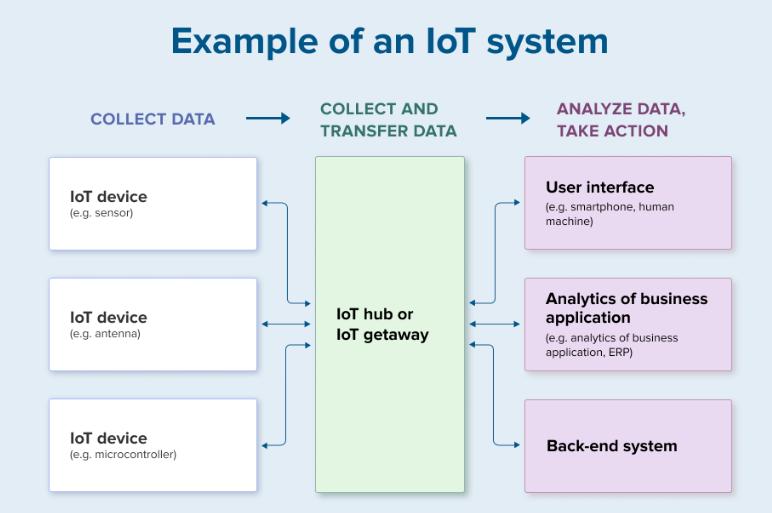What is the history of IoT?
Kevin Ashton, co-founder of the Auto-ID Center at the Massachusetts Institute of Technology (MIT), coined the term “Internet of Things” in 1999 during a presentation to Procter & Gamble (P&G) to emphasize the potential of radio frequency ID technology. This marked the beginning of a transformative era where IoT evolved from the merging of wireless technologies, microservices, and the internet, breaking down barriers between operational technology and information technology. This convergence enabled the analysis of unstructured machine-generated data to drive operational improvements and insights.
While Ashton’s mention in 1999 was pivotal, the concept of connected devices traces back to the 1970s under various names like embedded internet and pervasive computing. The evolution continued with the first internet-connected appliance, a Coke machine at Carnegie Mellon University in the early 1980s, showcasing early IoT capabilities. This machine allowed programmers to check its status via the web, a precursor to today’s interconnected smart devices.
IoT progressed from machine-to-machine (M2M) communication, where devices connected autonomously, to a vast sensor network of smart devices linking people, systems, and applications to gather and exchange data. M2M laid the groundwork for IoT by providing connectivity for seamless data transmission and management.
Furthermore, IoT represents an extension of supervisory control and data acquisition (SCADA), which involves real-time data gathering and control of remote equipment. SCADA systems evolved into early IoT frameworks, emphasizing connectivity and data processing.
By the 2010s, IoT gained significant traction globally, with China prioritizing it in their strategic plans. Today, billions of interconnected IoT devices support digital twins, enhance healthcare through wearables and remote monitoring systems, and drive advancements in various sectors.
What is the internet of things (IoT)?
The Internet of Things, or IoT, is a network of interconnected devices that communicate and share data with other IoT devices and the cloud. IoT devices typically have sensors and software embedded in them and can range from mechanical and digital machines to consumer products.
Many organizations across various industries are increasingly adopting IoT to operate more efficiently, enhance customer service, make better decisions, and boost business value.
With IoT, data can be transmitted over a network without the need for direct human-to-human or human-to-computer interactions.
In the realm of IoT, a “thing” can be a person with a heart monitor implant, a farm animal with a biochip transponder, a car equipped with sensors to alert the driver about low tire pressure, or any other object, natural or man-made, that can be given an Internet Protocol (IP) address and can transmit data over a network.
The Internet of Things, or IoT, is a network of interconnected devices that communicate and share data with other IoT devices and the cloud. IoT devices typically have sensors and software embedded in them and can range from mechanical and digital machines to consumer products.
Many organizations across various industries are increasingly adopting IoT to operate more efficiently, enhance customer service, make better decisions, and boost business value.
With IoT, data can be transmitted over a network without the need for direct human-to-human or human-to-computer interactions.
In the realm of IoT, a “thing” can be a person with a heart monitor implant, a farm animal with a biochip transponder, a car equipped with sensors to alert the driver about low tire pressure, or any other object, natural or man-made, that can be given an Internet Protocol (IP) address and can transmit data over a network.
How does IoT work?
An IoT ecosystem includes web-connected smart devices with embedded systems like processors, sensors, and communication hardware. They gather, send, and respond to data from their surroundings.
IoT devices share sensor data through an IoT gateway, a central hub. Data can be analyzed locally on an edge device before transmission, reducing data sent to the cloud. Devices can communicate with each other, acting on shared information. They operate mostly autonomously but can be interacted with by users for setup, instructions, or data access. Connectivity protocols vary based on IoT applications. AI and machine learning can enhance data collection in IoT.

Why is IoT important
IoT helps people live and work smarter by using smart devices to automate tasks in homes and businesses. For consumers, IoT-embedded devices like cars, smartwatches, and thermostats can enhance daily life. For instance, a car can open the garage door, a thermostat can adjust to a preferred temperature, and lighting can be customized upon arriving home.
In business, IoT provides real-time insights into operations, from machine performance to supply chain management. By automating tasks, reducing labour costs, cutting waste, and enhancing service delivery, companies can streamline processes and gain transparency into customer transactions. Ultimately, IoT makes manufacturing and delivery more cost-effective while improving overall efficiency.
Consumer and enterprise IoT applications
The Internet of Things (IoT) applications have a wide-reaching impact across consumer, enterprise, manufacturing, and various industries such as automotive, telecom, and energy. In the consumer realm, IoT facilitates smart home technology, enabling remote control of devices like thermostats, appliances, and lighting through computers and smartphones. Wearable devices equipped with sensors and software collect user data for enhancing comfort and safety, aiding in public safety initiatives like optimizing emergency response times or monitoring vital signs of workers in hazardous environments. In healthcare, IoT enables closer patient monitoring and streamlined inventory management in hospitals. Smart buildings leverage IoT sensors to reduce energy consumption by adjusting environmental settings based on occupancy levels. In agriculture, IoT-based smart farming systems monitor and manage crop conditions using connected sensors. In smart cities, IoT deployments like smart streetlights and meters help optimize traffic flow, energy usage, environmental monitoring, and sanitation practices.
